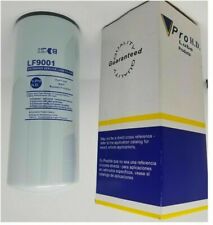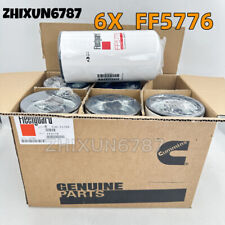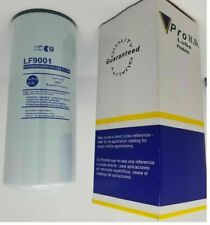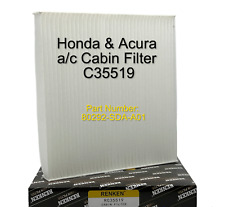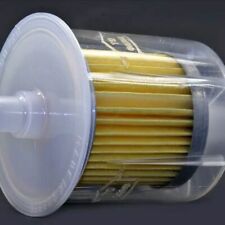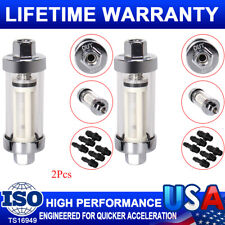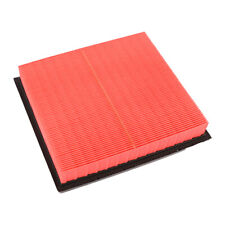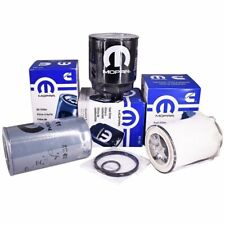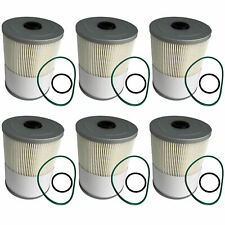Opel CEO Nick Reilly unveils ambitious plan for future, $15 billion investment by 2014

It’s been a while since we’ve heard anything from Opel since GM regained full control of the brand. Nick Reilly, Chief Executive Officer of Opel, said today that the brand will invest €11 billion ($15 billion USD) by 2014, a move that will reinvigorate 80 percent of Opel/Vauxhall carlines, while placing a strong emphasis on alternative propulsions.
The plan calls for 80 percent of the Opel/Vauxhall carlines to be at an age of three years or less by 2012 – that includes eight major launches in 2010 alone ““ such as Meriva, Corsa, Movano and Astra Sports Tourer ““ and another four in 2011, most notably the extended-range electric vehicle Ampera, an industry-first in Europe.
Reilly said that Opel will also spend €1 billion ($1.3 billion USD) in innovative and fuel-efficient powertrain technology as it introduces a lineup of new green vehicles. The brand also plans on accelerating efforts to introduce an entry in the sub-Corsa segment to make a strong push in the light commercial vehicle business.
Follow the jump for the press release for more details.
Press Release:
Opel/Vauxhall CEO Nick Reilly unveils ambitious Plan for the Future
Product offensive and new investments to put Opel on a sustainable path
o Opel to invest €11 billion by 2014
o Positive assessment of company”s plan by independent auditors Warth & Klein
o Opel formally applies for loans or loan guarantees
o New product offensive to utilize Opel design and technology expertise
o Focus on alternative propulsion, desirable core products and growth markets
o Break-even by 2011, profitability expected by 2012
o 20 percent capacity reduction across Europe
Frankfurt/Rüsselsheim. Chief Executive Officer Nick Reilly today announced an ambitious five-year €11 billion Plan for the Future that will reinvigorate 80 percent of Opel/Vauxhall carlines and place a strong emphasis on alternative propulsions.
At the same time, Reilly said the external auditor Warth & Klein judged the plan sound and viable. With this assessment, the company this morning formally applied for loans or loan guarantees from the German government.
“We are extremely pleased that we now have independent confirmation that our plan is sound and will place Opel and Vauxhall on the road to sustainable, long-term profitability,” Reilly said. “We now have a road map, we know where we are headed and we are working with all our partners so we can switch into high gear for a successful future.”
The viability plan envisions that 80 percent of the Opel/Vauxhall carlines will be at an age of three years or less by 2012. This includes eight major launches in 2010 alone ““ such as Meriva, Corsa, Movano and Astra Sports Tourer ““ and another four in 2011, most notably the extended-range electric vehicle Ampera, an industry-first in Europe.
In addition, Opel/Vauxhall will spend €1 billion in innovative and fuel-efficient powertrain technology as it introduces a range of new green products. This includes:
* Launching an extended-range electric vehicle in addition to the Ampera
* Introducing pure battery-electric vehicles in smaller-size segments
* Expanding LPG and CNG applications, start/stop technology and right-sizing of engines.
In addition, the company has accelerated efforts to introduce an entry in the sub-Corsa segment and to make a strong push in the light commercial vehicle business. Several studies are under way to look at possible profitable export programs in the Middle East and Asia-Pacific.
“Opel/Vauxhall has a clear vision: to be a leading European manufacturer of high quality, desirable automotive products, based on German engineering, driven by a united team of professionals and respected around the world. This vision will be realized by offering an exciting and expanded product portfolio based on a strategic push into alternative propulsion technology,” said Reilly.
In order to support this vision, the company has sharpened and refined its brand DNA and product pillars, and is embarking on a program that ensures this DNA is engrained in every future Opel/Vauxhall product. Future products will be developed in Rüsselsheim at the International Technical Development Center. If they are based on a vehicle architecture developed elsewhere, they will return to Rüsselsheim early to ensure they deliver on the Opel/Vauxhall brand promise.
€11 billion investment over next five years
The viability plan requires long-term funding of €3.3 billion to run the business during the transformation. In total, the company plans to invest approximately €11 billion over the next five years.
As part of the €3.3 billion funding requirements, parent company GM has already injected €600 million into the new Opel/Vauxhall business. In addition, GM provided €650 million in advanced payments in January to ensure appropriate cash positions. The company will continue to work with European governments to secure funding of approximately €2.7 billion through loans or loan guarantees. Discussions with employee representatives about the overall plan continue both on European and national levels.
“We will build a European company that is profitable, self-sustainable and fit for the long-term,” Reilly said. “This keeps a manufacturing base in Europe. It is good for Europe, good for our employees and good for our customers. We therefore trust that the plan will be supported by our employees.”
Major restructuring to include 20 percent reduction in capacity
The business plan foresees Opel/Vauxhall will break even by 2011 and be profitable by 2012. It is predicated on economic forecasts that 13.4 million cars will be sold in Western Europe this year ““ a reduction of more than 20 percent from 2007. Opel/Vauxhall does not believe the market will come back to the levels seen earlier in this century for quite some time.
To adjust to the current and forecasted market environment, Opel/Vauxhall will reduce its capacity by approximately 20 percent. This requires a job level reduction of approximately 8,300. That reduction will be spread out across most of Europe and includes 1,300 employees in sales and administration and 7,000 jobs in manufacturing. This includes the intent to close the Opel production facility in Antwerp, Belgium, as previously announced.
Once the capacity reduction is implemented, the company is expected to run at approximately 112 percent of its capacity on a two-shift basis and 87 percent on a three-shift basis and therefore has ““ along with other potential measures ““ sufficient upside potential once the market starts to recover.
The company has eliminated the former GM Europe management structure in Zurich, Switzerland, and is now managed from the Opel brand headquarters in Rüsselsheim, Germany.
Market share maintained due to strong new vehicle launches
Opel/Vauxhall started 2010 with confidence. The company maintained a 2009 market share of 7.59 percent in Western Europe in spite of tough price competition. Opel increased its market share and regained the number two position in its German home market, while Vauxhall remained number two in the United Kingdom. Sales of the Opel Insignia ““ European Car of the Year 2009 ““ jumped to 160,000 in 2009. In Europe, the Opel Insignia is the leader in the medium sedan segment. The new Astra won the prestigious European Golden Steering Wheel award (Goldenes Lenkrad) and several other awards even prior to its market introduction. More than 75,000 orders for the five-door version have already been placed.
Recently, the DEKRA vehicle monitoring organization reported Corsa had the lowest breakdown rate of all cars on the market in Germany. Despite a 16 percent reduction in volume, the company still was able to reduce Hours per Vehicle by four percent, an indication of its manufacturing excellence. Opel/Vauxhall for the first time reported less than 20 HPV ““ an industry milestone only achieved by two other companies.
“Today”s announcement marks the beginning of a new era for Opel/Vauxhall. It is the biggest overhaul in the company”s recent history,” said Reilly.
“We now have all the necessary ingredients for a successful future in place: a motivated workforce, a new and accountable company culture, a product offensive based on innovative and highly fuel-efficient technology, a competitive cost structure based on conservative volume assumptions, a dedicated management team operating out of our Rüsselsheim headquarters, and the support from so many stakeholders. Now it is up to us to prove that we can do it. I am confident that we will,” he added.
Manufacturing Operation Plan
|
Plant
|
Plan
|
Reduction
|
|
Antwerp
|
Intention to close Antwerp plant and to relocate current Astra HB3 to Bochum until new HP3 is launched, announced on Jan. 21st
|
2,377
|
|
Bochum
|
Exclusive allocation of new Zafira in 3 shift production at adjusted capacity. F13 transmission production will be closed and replaced by F17 transmissions out of Aspern
|
1,799
|
|
Ellesmere Port
|
Produce Astra HB5 and Astra SW; add 3rd shift Mid 2011. Final volume output determined by plan capability
|
0
|
|
Eisenach
|
Produce all HB3 from current Corsa; relocate HB3 specific stampings from Zaragoza to Germany. 3 shift utilization with NG Corsa
|
300
|
|
Gliwice
|
Production of NG Astra HB5, NB4 and HB3; introduction of 3rd shift as of Mid 2010
|
0
|
|
Luton
|
Continue production of current product line-up until end of lifecycle in CY 2013; new business opportunities under investigation
|
369
|
|
Ruesselsheim
|
Exclusive production location for all Insignia variants; add new Astra HB5 flex as of 2011. Relocate F40 transmission to another plant
|
862
|
|
Zaragoza
|
Keep current 2 line system and installed capacity. Leading mfg. facility for GSV platform beyond 2013. Volume shares agreed for Zaragoza and Eisenach. Allocation of new Combo and other Corsa GSV derivatives in case of positive business case.
|
900
|
|
Aspern
|
Continue production of M20 / M32 MT6 gearbox and of Fam. 0 (1,0, 1,2 and 1,4) gasoline engines; increased production of F17 gearbox due to replacement of F13 by F17
|
0
|
|
Szentgotthard
|
Production of Fam. 1 gasoline engines (1,6 and 1,8) and of Allison transmissions
|
0
|
|
Kaiserslautern
|
Utilization as highly competitive press and component supplier. Diesel engine remains for lifecycle, L850 engine production will be discontinued in CY 2011 due to low demand
|
300
|
– By: Omar Rana


